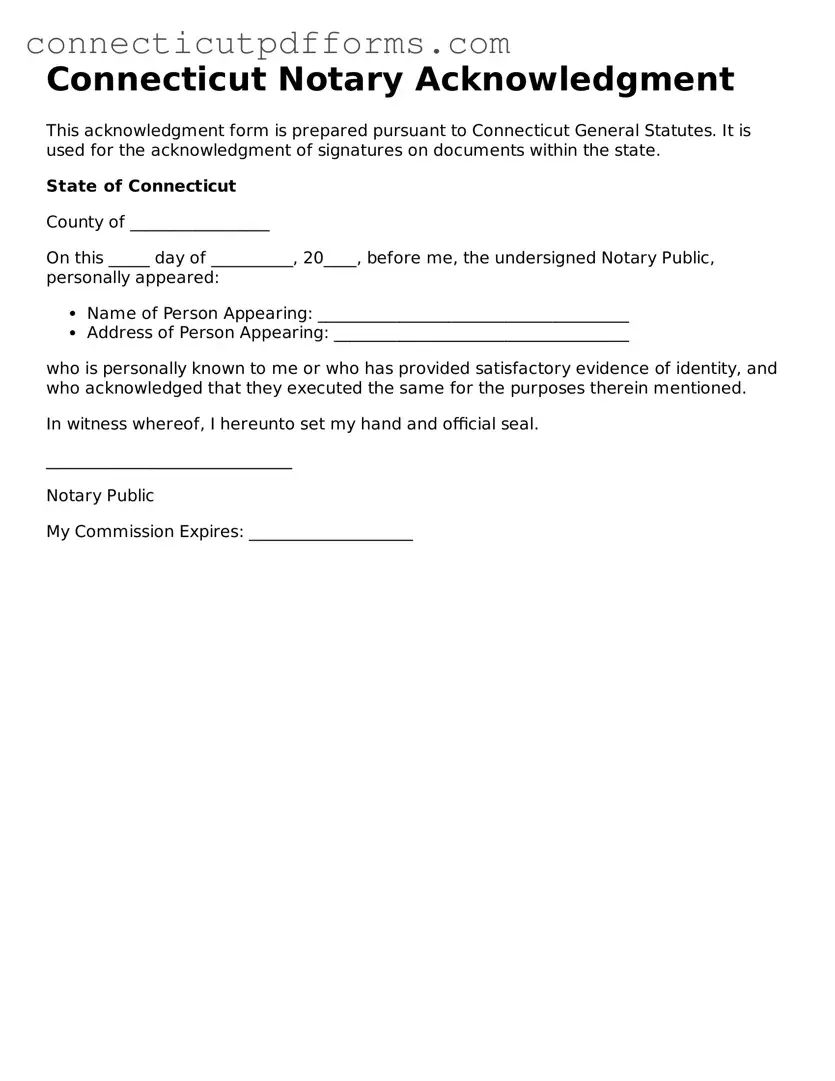Fillable Notary Acknowledgement Form for Connecticut
The Connecticut Notary Acknowledgement form is a legal document that verifies the identity of the signer and confirms their willingness to sign a particular document. This form is essential for ensuring that transactions are conducted fairly and transparently. To begin the process of filling out the form, please click the button below.
Launch Editor Now
